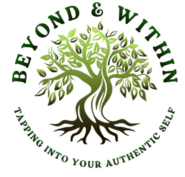Healing and Growth
Tapping into your Authentic Self
Healing from the inside out- with Grace, Compassion and Truth
Are you seeking emotional or relationship healing?
01.
Individual Therapy
Feeling overwhelmed, lost, or stuck in emotional pain?
Find a safe, supportive space to heal from depression, life transitions and emotional wounds.
02.
EMDR Therapy
Are painful memories or past traumas holding you back from living fully?
EMDR offers a clinically proven path to healing emotional wounds, helping you release the past and embrace new beginnings.
03.
Couples Counseling
Struggling to reconnect or rebuild trust in your relationship?
Restore love and trust with compassionate guidance.
04.
EAPS
Are you an organization, employer or HR Consultant seeking emotional wellness support for your employees?
We partner with organizations to offer confidential counseling, wellness workshops, Trainings to promote a healtheir, more productive workplace
How I can help you be happier
— 01
One-on-One
Counseling
— 02
Best-Selling
Books
Give yourself permission to heal
Iyanla Vanzant

About me
Psychologist, EMDR Consultant ,Trainer.
I am a Psychologist, EMDR Consultant and Trainer committed and passionate about facilitating people through healing, growth and restoration. I believe true healing reaches beyond the surface into the heart, mind and spirit
Bestseller Books
Etiam pharetra, erat sed fermentum feugiat, velit mauris egestas quam, ut aliquam massa.
Etiam pharetra, erat sed fermentum feugiat, velit mauris egestas quam, ut aliquam massa.
Happy Clients








